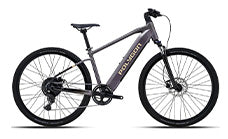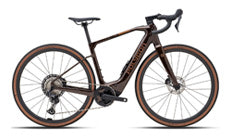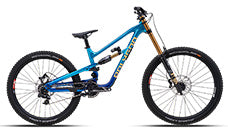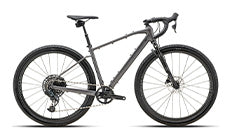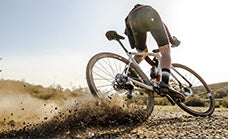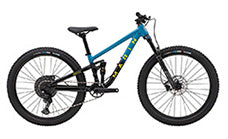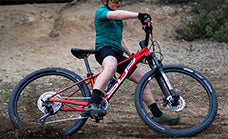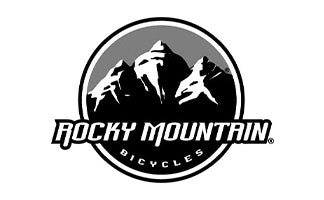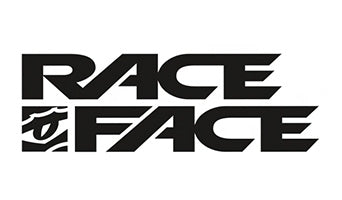How to Choose the Perfect Mountain Bike for Your Adventure
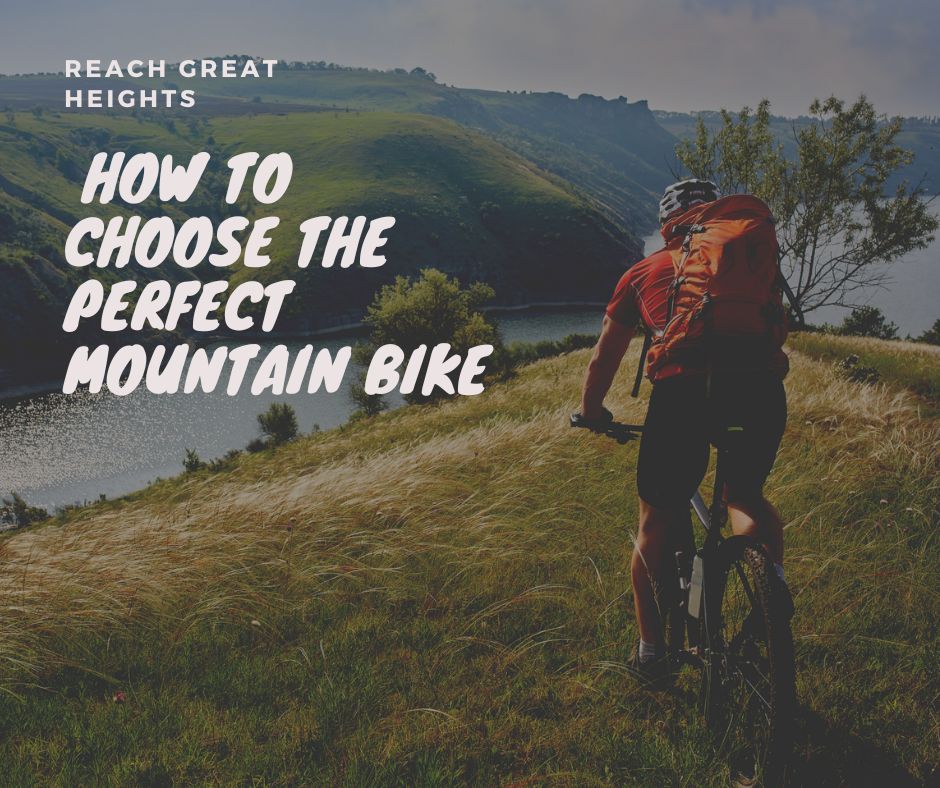
Mountain biking is a thrilling sport that blends adrenaline-fuelled excitement with the tranquil beauty of the natural world. Whether you're tackling rugged backcountry trails or cruising along local routes, the quality of your experience is greatly influenced by the type of mountain bike you select. With a diverse array of mountain bikes available, each designed for specific terrains and riding styles, choosing the right bike is crucial for maximising your performance and enjoyment.
From cross-country (XC) bikes that excel in speed and endurance, to robust downhill (DH) bikes built for steep, technical descents, the range is extensive. There are also trail bikes for general use, all-mountain bikes for more demanding adventures, and even fat bikes for those looking to conquer sand or snow. Each type offers unique features such as different suspension setups, wheel sizes, and frame materials, tailored to specific riding conditions and challenges.
Understanding the diversity among mountain bike types and aligning your choice with your riding preferences, habits, and local terrain is essential. It not only enhances your overall experience but also ensures safety and efficiency during your rides. In this guide, we’ll explore how to identify and choose the perfect mountain bike to suit your adventure needs, helping you make an informed decision that will bring countless hours of joyful and effective biking.
Understanding Different Types of Mountain Bikes
Selecting the right mountain bike involves understanding the different types available and how they cater to various riding styles and terrains. Here’s a breakdown of the main types of mountain bikes and what makes each one unique:
Cross-Country (XC) Bikes
- Design: XC bikes are built for speed and efficiency over primarily smooth terrains but are also capable of handling moderately rough trails.
- Features: These bikes typically feature lightweight frames, efficient suspension systems with relatively low travel (80-100mm), and are geared towards maximizing pedaling efficiency.
- Ideal For: XC bikes are perfect for racers and those who enjoy long-distance riding across varied terrains, including competitive tracks and marathon trails.
Trail Bikes
- Design: Trail bikes are the all-rounders of the mountain biking world, designed to perform well on a wide variety of terrains.
- Features: They generally have a moderate amount of suspension travel (120-140mm), providing a good balance between climbing efficiency and descending prowess.
- Ideal For: These bikes are suited for general trail riding and are great for riders who want a versatile bike that can handle both ascents and descents competently.
All-Mountain/Enduro Bikes
- Design: Built for more technical and challenging terrains, all-mountain bikes from Superior and Polygon are equipped to handle both demanding ascents and descents.
- Features: These bikes feature more robust frames and advanced suspension systems with higher travel (140-170mm), and often include features that enhance durability and performance in rough conditions.
- Ideal For: Superior and Polygon enduro bikes are ideal for riders who frequently tackle challenging trails and need a bike that can withstand significant abuse while providing comfort and control.
Downhill (DH) Bikes
- Design: DH bikes are specifically optimized for steep, downhill descents and are not designed for climbing.
- Features: These bikes come with very high suspension travel (170-200mm+), strong frames, and are often equipped with dual-crown forks to handle the toughest of descents.
- Ideal For: Best suited for riders who use lifts or shuttles to reach the top of a trail and focus primarily on downhill performance.
Fat Bikes
- Design: Characterized by their oversized, wide tires, fat bikes are designed to handle soft, unstable terrains like snow, sand, and mud.
- Features: The large tires provide increased stability and grip, allowing these bikes to ride over surfaces that would be challenging for typical mountain bikes.
- Ideal For: Fat bikes are perfect for adventurous riders looking to explore extreme environments and conditions where traditional bikes would struggle.
Understanding these distinct types of mountain bikes will help you choose one that best fits your riding style, preferred terrain, and overall biking goals. Whether you're racing, exploring diverse trails, or conquering extreme landscapes, there's a mountain bike specifically suited to your needs.
Key Factors to Consider When Choosing a Mountain Bike
Selecting the right mountain bike involves more than just choosing a style; several key features influence how a bike performs in various conditions and how well it suits your specific needs. Here’s what to consider to find your ideal mountain bike:
Suspension Type
- Hardtail: These bikes have a suspension fork at the front but a fixed rear end. They are lighter and less expensive than full suspension bikes and perform well on smoother trails and during climbs.
- Full Suspension: These models have both front and rear suspension, offering better comfort and control on rough and technical terrains. They can absorb more shock, making them ideal for aggressive downhill riding.
- Choosing: The choice between hardtail and full suspension should be based on the type of terrain you mostly ride on. Hardtails are sufficient for light trails and cost-effective, while full suspension bikes are better for rough terrains and more technical rides.
Wheel Size
- 26-inch Wheels: Once the standard, these wheels are now less common. They accelerate quickly and are highly maneuverable, making them good for technical courses.
- 27.5-inch (650b) Wheels: These provide a good balance between the maneuverability of 26-inch wheels and the obstacle rollover capability of 29-inch wheels.
- 29-inch (29ers) Wheels: Larger wheels that roll over obstacles more easily and maintain momentum well, making them great for long rides on varied terrains.
- Choosing: Consider your riding style and terrain; larger wheels might be better for long, open trails with lots of obstacles, while smaller wheels could be ideal for twisty, technical trails.
Frame Material
- Aluminum: Most common due to its good balance between strength, weight, and cost. Aluminum frames are durable and relatively lightweight, making them suitable for most riders.
- Carbon Fiber: Offers significant weight savings and increased stiffness, translating into efficient power transfer and high performance, albeit at a higher cost.
- Steel: Known for its durability and smooth ride quality. Steel is heavier but provides a comfortable feel, ideal for those who prioritize comfort over high performance.
- Choosing: Your budget and performance needs should guide this choice. If you are looking for lightweight and high performance and have the budget, go for carbon fiber. For durability and cost-effectiveness, aluminum or steel are excellent choices.
Fit and Comfort
- Proper Fit: It is essential that the bike fits your body to prevent discomfort and injuries. Factors like frame size, seat height, and handlebar position should be adjusted to suit your body dimensions.
- Test Rides: Always test ride bikes in a range of sizes and setups to find the best fit. A bike that fits well will feel natural to ride and handle more intuitively.
- Choosing: Visit bike shops where professionals can help you adjust and customize the fit according to your body, ensuring comfort and efficiency on your rides.
By considering these factors carefully, you can choose a mountain bike that not only fits your riding style and comfort but also enhances your overall mountain biking experience. Whether you're a beginner or a seasoned rider, the right mountain bike will help you tackle trails with confidence and ease.
Where Will You Be Riding?
Choosing the right mountain bike is not only about the bike's features but also where you plan to ride it. Different environments and riding purposes require different types of bikes. Here’s how to consider your usual or intended riding locations when selecting your mountain bike:
Local Trails
- Assess Trail Types: Start by evaluating the trails available in your area. Are they smooth and fast, rocky and technical, or a mixture of both? This will help determine whether you need a bike with more agility or one built for speed and endurance.
- Bike Suitability: For predominantly smooth trails, a hardtail may be sufficient and more cost-effective. If the trails are rough and involve lots of obstacles or technical features, a full-suspension bike might be necessary to handle bumps and provide better control and comfort.
Competitive Riding or Leisure
- Racing: If you intend to race, consider a bike optimized for the type of racing you'll do. Cross-country races benefit from lighter, speed-oriented bikes like XC mountain bikes, while enduro races might require more durable and aggressive bikes with higher suspension travel.
- Leisure Riding: For casual riding, comfort and versatility are key. A trail bike can be ideal as it offers a balanced ride capable of handling a variety of conditions without compromising too much on speed or comfort.
Terrain Specifics
- Steep Hills: Bikes with higher suspension travel and stronger brakes are preferred for steep terrains to help manage descents and provide adequate stopping power.
- Flat Trails: On flatter terrains, a bike with less suspension and lighter weight may be more beneficial, enhancing pedaling efficiency and speed.
- Mixed Terrains: For areas where the terrain varies significantly, consider an all-mountain bike that can handle both climbs and descents well, offering a good compromise between weight, efficiency, and capability.
Understanding the specific conditions of where you will be riding and the purpose of your biking activities is crucial in choosing the right mountain bike. This approach ensures that the bike you select not only fits your personal preferences and riding style but is also perfectly suited for the environment in which it will be used. This alignment maximizes both performance and enjoyment, making every ride a rewarding experience.
Budget Considerations
Selecting the right mountain bike involves carefully balancing cost and quality to ensure you get the most value for your money. Here’s how to approach budget considerations when choosing a mountain bike:
Price Range
- Setting a Budget: Before you begin shopping, decide on a budget that reflects your commitment and how much use you expect to get out of your bike. Mountain bikes can range from a few hundred to several thousand dollars. Entry-level bikes are typically between $400 and $1,000, mid-range bikes from $1,000 to $2,500, and high-end bikes can go from $2,500 to $10,000 and beyond.
- Consider Long-Term Costs: Think about the longevity of the bike and its components. It might be worth investing a bit more upfront for a bike that will last longer and require fewer repairs.
Cost vs. Quality
- Avoid Very Cheap Models: While it can be tempting to save money, very inexpensive bikes may compromise on components and build quality. They may not withstand frequent riding or more challenging trails, leading to higher maintenance costs or the need for replacements.
- Quality Investment: Higher-quality bikes generally offer better performance, durability, and a more enjoyable ride. They also tend to have better resale value should you choose to upgrade in the future.
Upgrades
- Future Proofing: Consider the upgrade potential of the bike you intend to buy. Some cheaper models might limit your ability to upgrade due to compatibility issues with higher-end components.
- Initial Compromises: If you have a limited budget, you may opt for a mid-range bike that offers the possibility to upgrade key components later, such as the suspension or drivetrain, as your skills improve or as parts wear out.
- Cost of Upgrades: Factor in the potential costs of desired upgrades. Sometimes, investing in a slightly more expensive bike that already includes some of these upgrades can be more cost-effective than upgrading a cheaper model.
By carefully considering these budget factors, you can choose a mountain bike that not only fits your current financial situation but also your long-term riding goals and needs. This approach ensures you invest in a bike that will provide the best possible experience within your budget, while also allowing for growth and adaptation as your riding style evolves.
Test Riding Is Essential
The importance of test riding various mountain bike models before making a purchase cannot be overstated. This critical step ensures that the bike not only fits but also meets your expectations in performance across different terrains and conditions. Here’s why and how you should approach test riding, with a specific focus on options available through BikesOnline AU:
Try Different Models
- Experience First-Hand: Test riding allows you to feel the bike's handling, comfort, and responsiveness, which can vary significantly between models and brands. It’s essential to experience how these features translate into ride quality. Consider checking out the range of mountain bikes offered by BikesOnline AU, as they provide a variety of models suitable for different riding preferences and skills.
- Compare and Contrast: By trying different models, you can directly compare how various bikes perform. For instance, you might notice differences in how suspension systems handle bumps or how the geometry of the bike affects your riding posture and efficiency. BikesOnline AU often has a range of models from different manufacturers, allowing for a comprehensive comparison.
- Subjective Fit: Personal comfort is subjective and can't fully be gauged by looking at specifications alone. A test ride can reveal a lot about how well a bike suits your body size, shape, and riding style. Utilizing BikesOnline AU’s offerings can help you find the perfect fit, as they typically stock a wide range of sizes and configurations.
Specialist Bike Shops
- Expert Advice: Staff at specialist bike shops like those affiliated with BikesOnline AU are usually experienced riders themselves and can provide valuable insights that go beyond the technical specifications. They can help you understand the nuances of each model’s performance in real-world conditions.
- Fitting Services: Many specialist shops, including those partnered with BikesOnline AU, offer fitting services to fine-tune the bike’s setup to your specific dimensions, which can drastically improve comfort and efficiency.
- After-Sales Support: Establishing a relationship with a specialist shop can be beneficial for future maintenance and repairs. They can also keep you informed about upgrades and new products that fit your evolving needs. BikesOnline AU provides excellent after-sales support, making them a reliable choice for ongoing maintenance and advice.
Incorporating test rides into your selection process, especially through a reliable provider like BikesOnline AU, ensures that your final choice of mountain bike is well-informed and tailored to your personal preferences and riding conditions. This step is crucial in finding a bike that you will enjoy riding for years to come.
Conclusion
Choosing the right mountain bike is a decision that can significantly enhance your riding experience, affecting everything from your comfort on the trail to your bike's performance in various conditions. The key to a successful selection lies in understanding the different types of mountain bikes available, the specific features each one offers, and how well they align with your intended use and personal riding style.
Mountain biking is not a one-size-fits-all sport. Each rider has unique preferences, and each trail offers its own set of challenges. Whether you're navigating steep descents, cruising through rolling hills, or tackling rugged technical terrains, the right bike makes all the difference. That's why it's crucial to invest time in research and consider factors such as bike type, frame material, suspension, and wheel size in relation to where and how you plan to ride.
Furthermore, the importance of test riding different models cannot be overstated. There’s no better way to gauge a bike's feel, fit, and responsiveness than by actually riding it on terrain similar to what you commonly face. Specialist bike shops, particularly those with a wide selection like BikesOnline AU, offer invaluable resources through expert advice and the opportunity to test various models.
I encourage all riders to embrace the process of selecting a new mountain bike with enthusiasm and thoroughness. Take the time to explore different options, ask questions, and test extensively. Your efforts will pay off when you find that perfect mountain bike that feels like an extension of yourself on the trails—transforming each ride into a more enjoyable and effective adventure.


